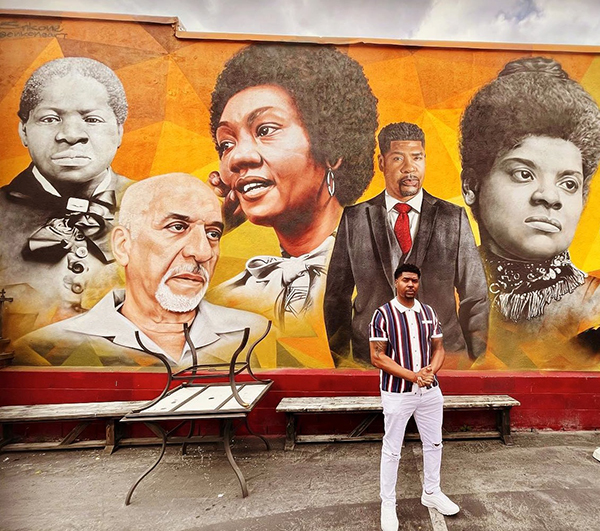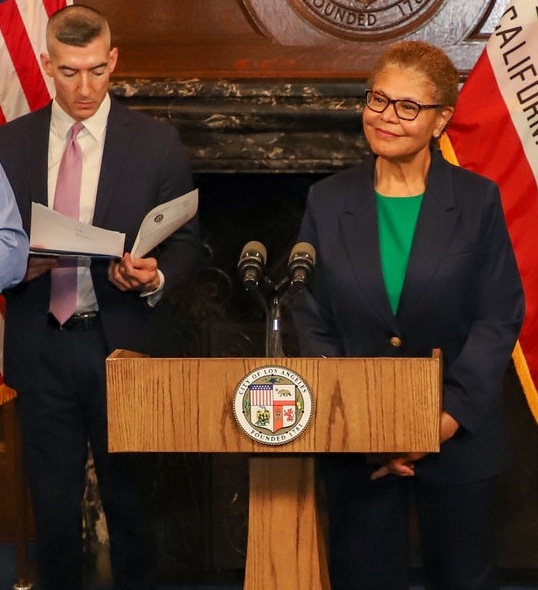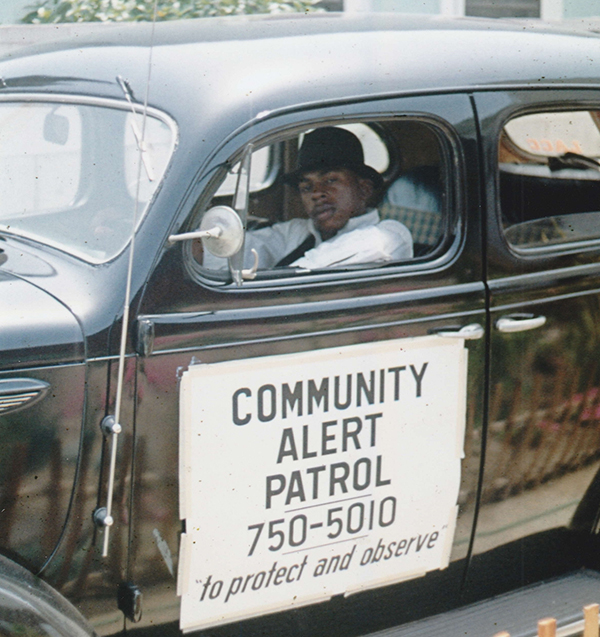By Shirley Hawkins
Contributing Writer
LOS ANGELES — The first thing a visitor notices when approaching the Hidden History Museum in Jefferson Park is the colorful mural of Black historical figures that graces the outside of the building. The dignified, lifelike figures appear to nearly step out of the mural to greet visitors at any moment.
Museum founder, activist and documentary filmmaker Tariq Nasheed, producer of the Hidden Colors film series, said he was amazed to find out that many of the contributions of trailblazing African Americans, particularly in California, were frequently suppressed or omitted from the history books.
Several years ago, Nasheed made it his mission to highlight the contributions of the country’s Black heroes and sheroes and to share their contributions with the world.
“I wanted to put together a safe space so that people can come in and learn about our history and our culture,” he said, adding that the museum held its grand opening in March.
As you walk through the museum, located in a historically Black neighborhood, visitors can explore the contributions of civil rights activists, artists and entrepreneurs. Photos and plaques accompany the biographies of African-American trailblazers such as the little-known Black American aviator John Robinson, known as “The Brown Condor,” who fought for the imperial Ethiopian Air Force against Italian dictator Benito Mussolini.
The museum also pays homage to Madam C. J. Walker, an entrepreneur, philanthropist and social activist who sold cosmetics and hair care products to Black women through her Madam C. J. Walker Manufacturing Company. She is noted as being one of the first female self-made millionaires in America.
Walker was also the pioneer of the direct sales marketing business which was later adopted by companies like Amway, Avon and Mary Kay.
For hip hop fans, there is a large display that pays tribute to California’s rap pioneers, such as Ice T, Greg Mack, NWA, Ice Cube, Dr. Dre and Eazy E, all of whom helped to solidify West Coast rap into the annals of musical history.
A further stroll through the museum reveals a huge bust of Biddy Mason that seems to stare back exuding dignity and pride. An ex-slave who became a real estate tycoon, Mason rose to become one of the most important and wealthiest African Americans in California.
“There was a lot of slavery going on here in California, contrary to what people believed,” Nasheed said. “San Bernardino was actually a slave colony and Mason was one of the enslaved people at the colony, but she fought for her freedom and won. She went on to purchase a lot of prime real estate in downtown Los Angeles.”
Mason, a generous philanthropist, was instrumental in founding a traveler’s aid center and a school and day care center for Black children. She also was one of the founding members of the First African Methodist Episcopal Church of Los Angeles, which was established in 1872 and remains Los Angeles’ oldest church for African Americans.
The museum also pays homage to architect Paul Revere Williams, whose many buildings are scattered throughout the landscape of Los Angeles.
“He was a Black man who designed a lot of the significant buildings out here, such as the LAX tower and a lot of buildings in downtown Los Angeles,” Nasheed said. “He also designed homes for a lot of celebrities.”
Some of the celebrities Williams designed houses for were Frank Sinatra, Bill “Bojangles” Robinson, Lon Chaney Jr., Lucille Ball, Tyrone Power, Barbara Stanwyck and Danny Thomas.
Also on display is the biography of inventor Lewis Latimer, who worked with Thomas Edison on the lightbulb.
“It was Latimer who invented the lightbulb, not Edison,” Nasheed said.
Other notable African Americans featured in the museum are historian, professor and lecturer John Henrik Clarke, journalist Ida B. Wells, inventor George Washington Carver, author and historian J.A. Rogers and nutritionist and herbalist Dr. Sebi.
The museum also features a freedom fighters exhibit that pays homage to Black Panther members Fred Hampton, Eldridge Cleaver and Huey P. Newton as well as the Buffalo Soldiers and the Maroons, who led slave insurrections in Jamaica and the Dominican Republic in their fight for independence.
The Hidden History Museum is open from 11 a.m. to 4 p.m. Monday through Friday and is located at 2131 W. Jefferson Blvd. Admission is free.
Shirley Hawkins is a freelance reporter for Wave Newspapers. She can be reached at metropressnews@gmail.com.











